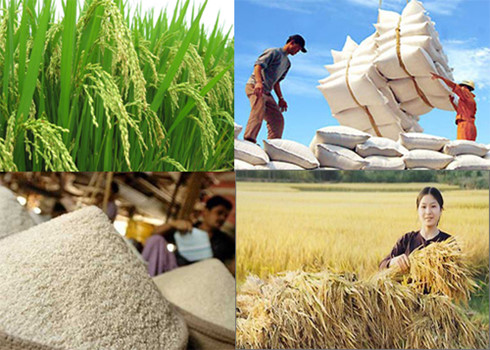Vietnam takes larger slice of EU, ASEAN market share
- Shaped fruits market prepared for Tet
- Fruit and veg outgrow rice to become Vietnam's third largest foreign-currency earner
- Fruit and veggie imports hit more than US$500 million
The Southeast Asian country’s share of the total trade between the EU and ASEAN members in 2015 jumped 3.3% compared against the figures for 2014 to 19.1% of the US$227 billion in total trade, according to official statistics.
In the last few years, Vietnam has risen above many of its neighbours in ASEAN by posting impressive trade volume growth with a variety of countries. For instance, Vietnam is now leading the pack in ASEAN as the biggest exporter to the US.
 |
This impressive growth has been a crucial precursor to the trade pact between the EU and Vietnam. With the agreement now securely in place, and considering recent events within Europe, Vietnam has the potential of not only continuing this trend, but also improving its own production and expanding its key industries exponentially.
Vietnam has been able to take advantage of shifting production patterns across Asia such as rising labour costs in China to successfully attract investment from manufacturing giants the likes of Samsung Electronics and LG Electronics.
While Singapore remains the largest trade partner of ASEAN with the EU, Vietnam managed in 2015 to dig into its market share, reducing it by a full 1% from 25.1 to 24.1% of total trade with EU bloc members.
In addition, official statistics showed that Malaysia, Thailand and Indonesia also lost market share to Vietnam.
Growing Population
After the conclusion of negotiations with Singapore in 2014, Vietnam is the second country in the ASEAN that the EU has concluded free trade negotiations with. Negotiations on a similarly long-planned free trade deal with Thailand were suspended after the country suffered a military coup in May 2014.
Exports from Vietnam to the EU are dominated by mobile phones, electronic products, footwear, textiles and clothing, coffee, rice, seafood and furniture, according to statistics of the General Department of Vietnam Customs.
Sluggish economic prospects in advanced countries have pushed investors to search for opportunities in markets that are benefiting from faster growth and younger populations, such as Vietnam and the Philippines.
Vietnam has higher levels of income and is generally more developed, economic experts have said, which has attracted the interests of manufacturing investors around the globe.
It is also maturing into a market demanding more advanced technologies, which should benefit manufacturing in the future in terms of increased labour productivity and higher quality and more innovative products.
Total EU trade with ASEAN rose 12% last year and that trend is expected to continue an upward trajectory, economic experts have said.
They add that taking into consideration the Vietnam, EU free trade agreement— this should result in Vietnam commanding an even larger slice of EU, ASEAN market share.
The free trade pact between the two economies at its core, aims to liberalize both tariffs and non-tariff barriers for key imports on both sides over a period extending the next 10 years.
For Vietnam, the tariff elimination will certainly benefit its key export industries, which are very labour-intensive in nature, and as such facilitate the expansion of these industries, both in terms of capital and increased employment.

